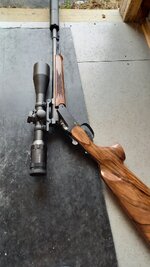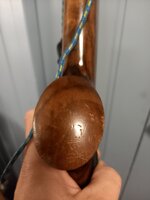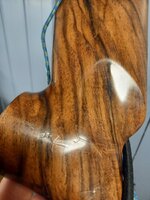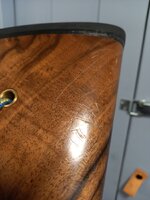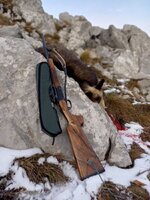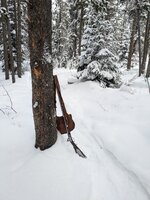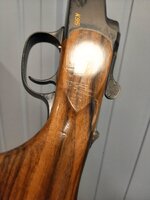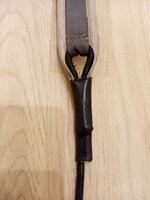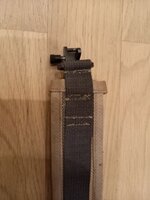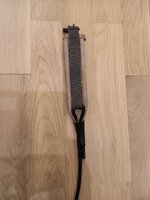I have a "semi-London" finish ( a term I just made up) as you're supposed to go back to bare wood whereas I applied mine above the factory finish (which doesn't go as deep). The internet doesn't really seem to have a lot of info on that "trade secret", but a lot of confusing terms and "non-explanations" like slacum and rubbing oil. But a London Gunsmith who works on the expensive Purdey/ Holland&Holland etc best guns (they start at $30K?) instructed me and assured me there's nothing to it other than trusting the procedure and not rushing it - any mistake can easily be rubbed down:
"Ok, so I do a lot of traditional best
London
oil finishes which Is a blend of Alkanet root, boiled linseed oil, beeswax and terebine driers. This does a great finish over many applications however this will fill the chequering unless covered and require it to be re-cut. If you don’t want to have to cover the chequering or re-cut it then I’d recommend something like this. Doesn’t fill the chequering, is absorbed by the wood to protect it and is no risk as in you can’t leave it on too long/doesn’t matter if you don’t cut it back as doesn’t go hard…"
I cheated with an "abridged" version with Osmo hardwax oil (used on wood floors, I couldn't be arsed to make the oils), but applied with the same technique meaning a lot of thin layers buffed back with 0000 steel wool to fill pores. After perhaps 7 weeks I had the smooth, "non-orange skin" dimpled surface and I topped that with neutral Liberon Black Bison Wax. I tried Renaissance Wax for the foreend, but a few months later I must say the Liberon looks much better. The Renaissance wax gave me no control over the surface, it was either clouded or high gloss and quite smelly. The Liberon gave me much more precise control and I left the surface a rich silky matte. With the summer passed and the rifle used a bit, the foreend (Renaissance) has lost much of its gloss but the rear remains the same. As I understand it, the wax is mostly to have the water run off. All metal-wood contact points were finished with white lard, which does nothing to either surface but adds a seal.
This is the basic procedure I repeated for 7 weeks
. Gotta love a finish that’s easy to touch up. I usually keep things pretty touched up, but this one, im kinda looking forward to putting it through its paces. Iv come to terms with, it will get scars lol.

